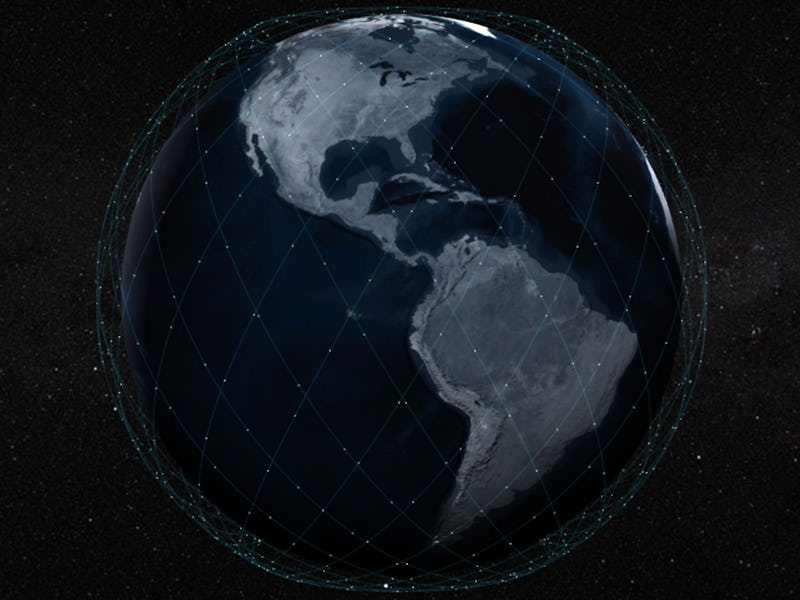Musk Reads: Starlink gets scrubbed
Did the FCC break the law over Starlink? Crew Dragon prepares to embark on the next six months. And why don't Mars colonists live in lava tubes?

Did the FCC break the law over Starlink? Crew Dragon prepares to embark on the next six months. And why don’t Mars colonists live in lava tubes? It’s Musk Reads: SpaceX Edition #137.
A version of this article appeared in the “Musk Reads” newsletter. Sign up for free here.
Musk quote of the week
“We should have a base on the moon, a city on Mars.”
- Read more about Musk’s plan for Moon bases and Mars cities.
SpaceX Starlink
Liftoff? Not quite. SpaceX was planning to launch its fourth batch of 60 Starlink internet satellites on Monday from Florida’s Cape Canaveral Air Force Station, but due to strong upper level winds, it delayed the launch to Tuesday. When it does lift off, it will use a Falcon 9 booster that previously flew on the March 2019 Crew Dragon and June 2019 RADARSAT constellation missions. The goal will be to land the booster on the Of Course I Still Love You drone ship and catch the two fairing halves using Ms. Tree and Ms. Chief.
Starlink is designed to support up to 42,000 satellites, but astronomers are worried about the impact on their work. Starting with the most recent batch, SpaceX has started experimenting with painting the satellites black to reduce their shine. A legal paper, shared with Business Insider last week and due for publication this year, suggests that the FCC giving the thumbs-up may have violated federal environmental law. The argument rests mostly on the National Environmental Policy Act from 1970, which requires agencies to assess the environmental impact of activities. In a statement, the FCC said it “strongly rejects” the notion.
Ben Lamm, CEO at Hypergiant Industries which is developing interplanetary internet, called for caution as space rapidly commercializes. Speaking to Inverse, Lamm said that we “need to make sure satellites don’t interfere with our ability to monitor the universe and that we have the appropriate technologies and defenses in place to deal with a rapidly cluttered local solar environment.”
Starlink satellites weigh 573 pounds each and orbit at an altitude of 550 kilometers. Later this year, SpaceX expects to start offering high-speed internet provided by the satellites to the northern United States and Canada.
What’s next for SpaceX: SpaceX is now planning to launch its “Starlink 3” mission on Tuesday at 9:28 a.m. Eastern time.
In other SpaceX news
How did the Crew Dragon in-flight abort test go? Pretty well, according to a report released Thursday, which will help SpaceX demonstrate that its human-carrying capsule can escape from a failing launch during an emergency. The January 19 test saw a Falcon 9 launch the Crew Dragon for 85 seconds, before the procedure was engaged, while the rocket was moving at up to 1,200 mph. Eight SuperDraco thrusters accelerated the capsule to 1,500 mph in seven seconds. As expected, the Falcon 9 burned up after the capsule left the rocket.
The success paves the way for NASA to start sending humans in the Crew Dragon to the International Space Station, a procedure that could start as early as the second quarter of 2020. The next six months are about to get a whole lot more interesting. Read more.
Musk Reads mailroom
Lorne Erik Benedictson writes:
Artist renderings of the initial Moon and Mars habitats often show domes built on the surface.
A possibly better solution could be to locate and develop a large lava-tube.
A lava tube could be sealed and pressurized with a breathable atmosphere. A lava tube would provide protection from radiation, meteorites, and wind and temperature variations.
Just a thought.
Indeed, you’re not the first to have the same thought. Professor Lewis Dartnell shared with us back in October 2019 his vision of a Moon colony located underground, hidden inside the cave-like lava tubes left over from earlier volcanic activity. Experts in Latvia have proposed the same idea for Mars. The main downside is that you’d rarely see sunlight.
Got any comments or queries? Don’t forget to send them over to muskreads@inverse.com.
Video of the week
An incredible video from the Cosmic Perspective team, with some help from Everyday Astronaut, captured the Crew Dragon in-flight abort test at a super-slow 120 frames per second.
Got any photos or videos you’d like to share? Feel free to send them over to muskreads@inverse.com.
The ultra-fine print
This has been Musk Reads: SpaceX Edition #137, the weekly rundown of essential reading about futurist and entrepreneur Elon Musk. I’m Mike Brown, an innovation journalist for Inverse.
- Email me directly at mike.brown@inverse.com and follow Inverse on Twitter @inversedotcom. Follow me on Twitter @mikearildbrown.
- Got any comments or queries? Don’t forget to send them over to muskreads@inverse.com.
A version of this article appeared in the “Musk Reads” newsletter. Sign up for free here.